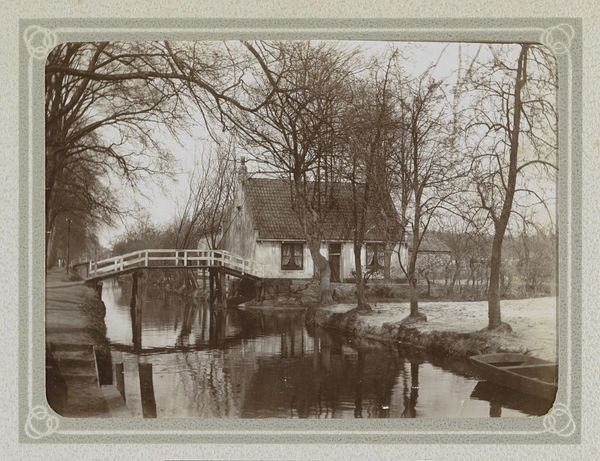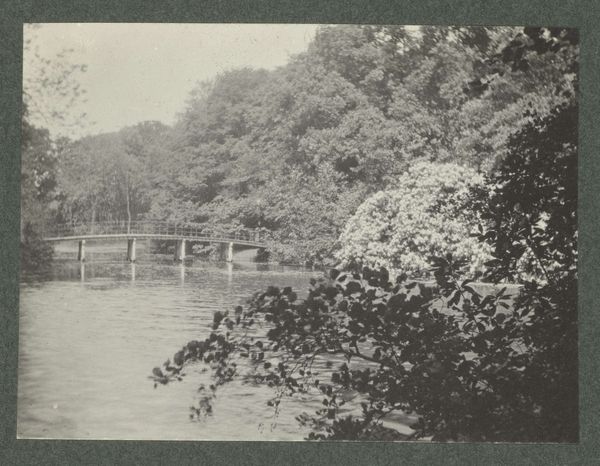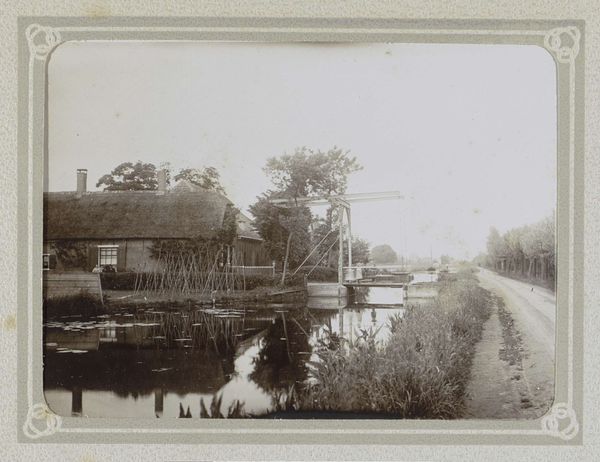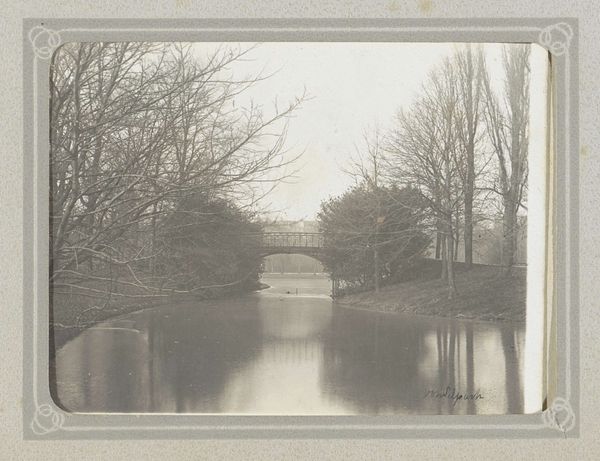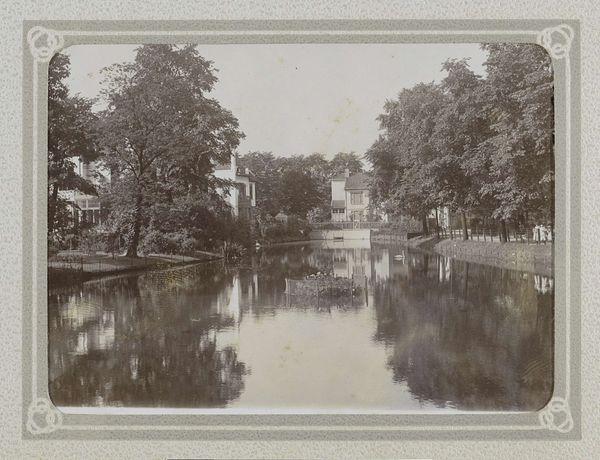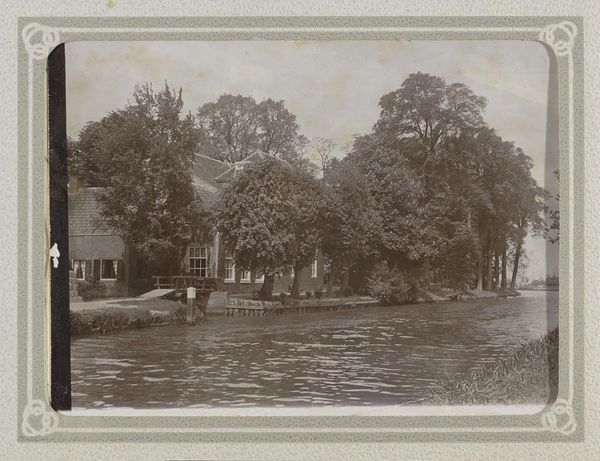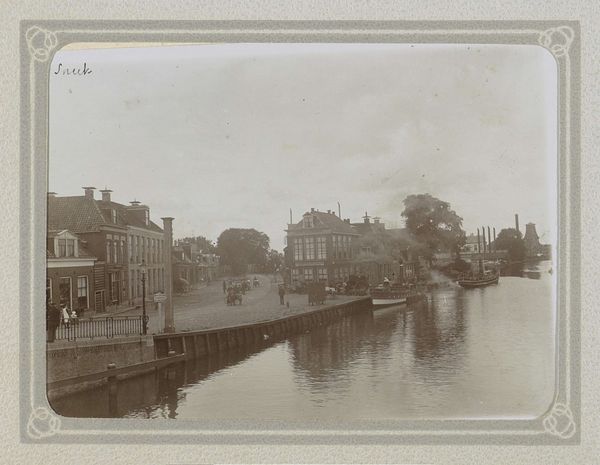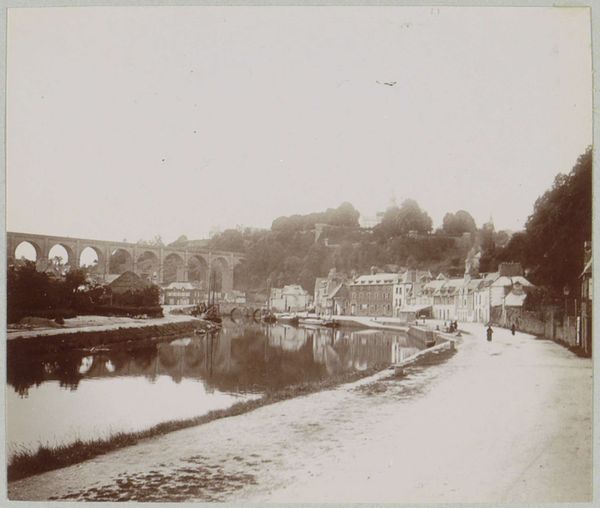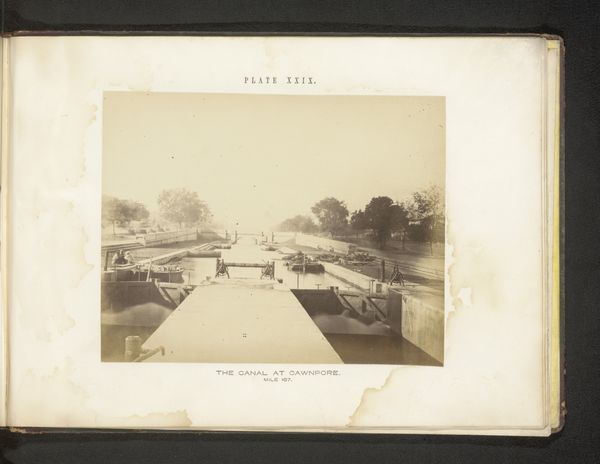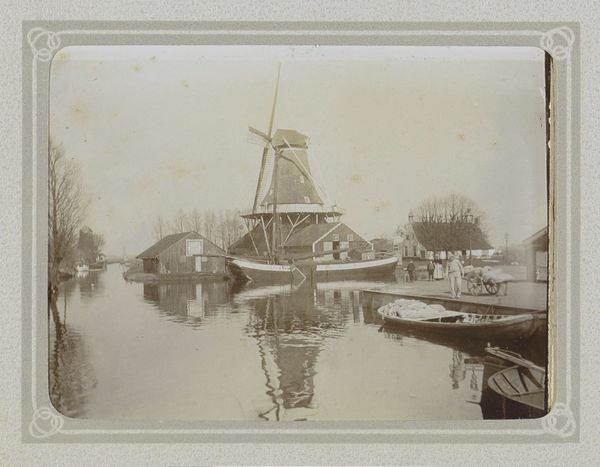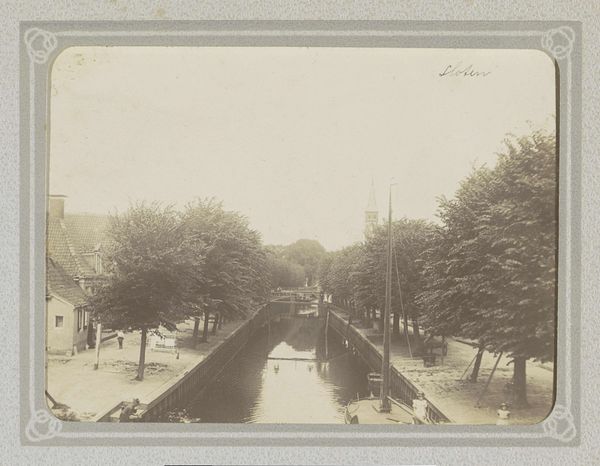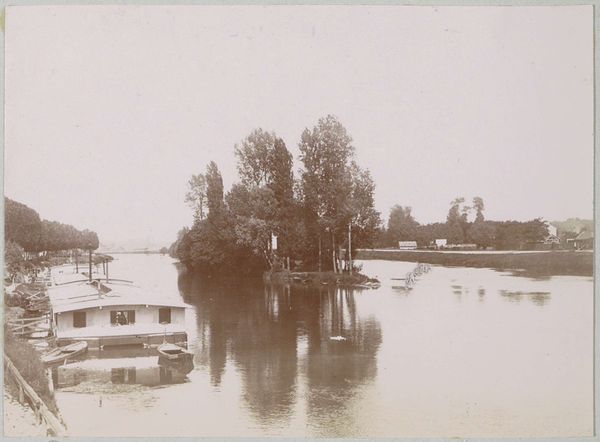
Ophaalbrug over een water bij huizen, op de voorgrond een boot beladen met rieten manden c. 1905 - 1907
0:00
0:00
Dimensions: height 81 mm, width 110 mm
Copyright: Rijks Museum: Open Domain
Curator: Ah, this photo just pulls me in. It’s like stepping into a dream. Editor: Indeed. What we have here is a photograph by Folkert Idzes de Jong, likely taken between 1905 and 1907. The rather long title translates to “Drawbridge over water near houses, with a boat loaded with reed baskets in the foreground.” It really encapsulates the scene, doesn't it? Curator: Absolutely. The light...it’s so soft, almost hazy. It gives everything this otherworldly feel, like the scene is veiled. What is the process for such muted photography? Editor: You're responding to its pictorialist qualities. It was a movement that treated photography as fine art, often manipulating the image through soft focus and printing techniques to evoke atmosphere and emotion. The goal was to move away from purely representational photography. Curator: I see it now, the bridge with its gentle lines feels solid and delicate. It's amazing how a photograph can capture that inherent contradiction. The boats below and beyond feel so ordinary, yet the mist of this photo grants them something ephemeral. Editor: What's fascinating is the ordinariness of the subject, the working boats filled with reeds. De Jong wasn't photographing royalty or landscapes deemed sublime, but a common scene elevated through aesthetic choices. The use of a muted palette democratizes art, suggesting value can be found anywhere. Curator: Exactly. It transforms this simple waterway into something...iconic. Almost like those canals have witnessed so much human traffic and work, which leaves its print here. This ordinary setting just embodies the feel of history, the stories those bridges and canals could tell. Editor: Right, and in its own way, this image engages with the evolving sense of national identity around the turn of the century. There's a romanticism to it, connecting the present to the past, and affirming the quiet beauty of everyday life in the Netherlands. Curator: Beautifully said. I'm completely won over; I see that connection so much more vividly now. Editor: Glad to offer a little perspective. This image definitely lingers with you, prompting thought on its own.
Comments
No comments
Be the first to comment and join the conversation on the ultimate creative platform.
